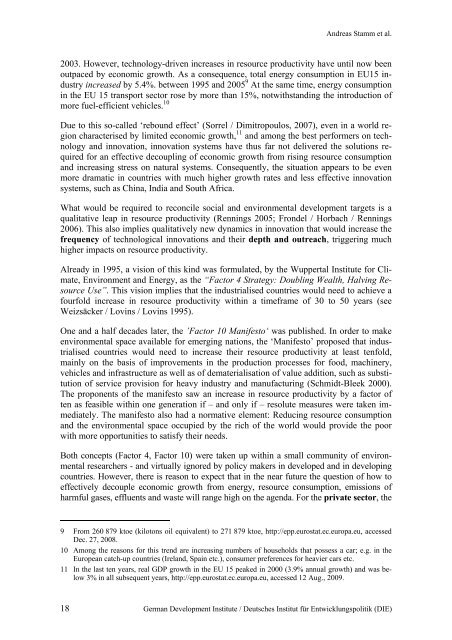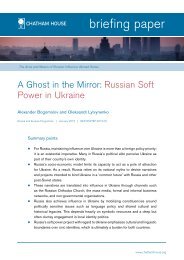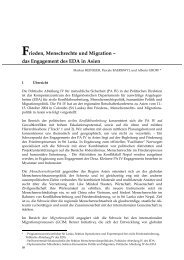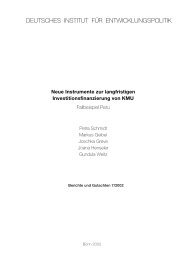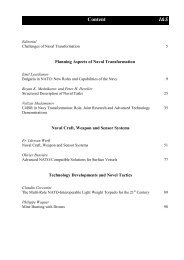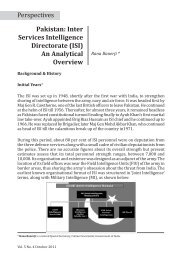Andreas Stamm Eva Dantas Doris Fischer Sunayana ... - ETH Zürich
Andreas Stamm Eva Dantas Doris Fischer Sunayana ... - ETH Zürich
Andreas Stamm Eva Dantas Doris Fischer Sunayana ... - ETH Zürich
You also want an ePaper? Increase the reach of your titles
YUMPU automatically turns print PDFs into web optimized ePapers that Google loves.
<strong>Andreas</strong> <strong>Stamm</strong> et al.<br />
2003. However, technology-driven increases in resource productivity have until now been<br />
outpaced by economic growth. As a consequence, total energy consumption in EU15 industry<br />
increased by 5.4%. between 1995 and 2005 9 At the same time, energy consumption<br />
in the EU 15 transport sector rose by more than 15%, notwithstanding the introduction of<br />
more fuel-efficient vehicles. 10<br />
Due to this so-called ‘rebound effect’ (Sorrel / Dimitropoulos, 2007), even in a world region<br />
characterised by limited economic growth, 11 and among the best performers on technology<br />
and innovation, innovation systems have thus far not delivered the solutions required<br />
for an effective decoupling of economic growth from rising resource consumption<br />
and increasing stress on natural systems. Consequently, the situation appears to be even<br />
more dramatic in countries with much higher growth rates and less effective innovation<br />
systems, such as China, India and South Africa.<br />
What would be required to reconcile social and environmental development targets is a<br />
qualitative leap in resource productivity (Rennings 2005; Frondel / Horbach / Rennings<br />
2006). This also implies qualitatively new dynamics in innovation that would increase the<br />
frequency of technological innovations and their depth and outreach, triggering much<br />
higher impacts on resource productivity.<br />
Already in 1995, a vision of this kind was formulated, by the Wuppertal Institute for Climate,<br />
Environment and Energy, as the “Factor 4 Strategy: Doubling Wealth, Halving Resource<br />
Use”. This vision implies that the industrialised countries would need to achieve a<br />
fourfold increase in resource productivity within a timeframe of 30 to 50 years (see<br />
Weizsäcker / Lovins / Lovins 1995).<br />
One and a half decades later, the ’Factor 10 Manifesto‘ was published. In order to make<br />
environmental space available for emerging nations, the ‘Manifesto’ proposed that industrialised<br />
countries would need to increase their resource productivity at least tenfold,<br />
mainly on the basis of improvements in the production processes for food, machinery,<br />
vehicles and infrastructure as well as of dematerialisation of value addition, such as substitution<br />
of service provision for heavy industry and manufacturing (Schmidt-Bleek 2000).<br />
The proponents of the manifesto saw an increase in resource productivity by a factor of<br />
ten as feasible within one generation if – and only if – resolute measures were taken immediately.<br />
The manifesto also had a normative element: Reducing resource consumption<br />
and the environmental space occupied by the rich of the world would provide the poor<br />
with more opportunities to satisfy their needs.<br />
Both concepts (Factor 4, Factor 10) were taken up within a small community of environmental<br />
researchers - and virtually ignored by policy makers in developed and in developing<br />
countries. However, there is reason to expect that in the near future the question of how to<br />
effectively decouple economic growth from energy, resource consumption, emissions of<br />
harmful gases, effluents and waste will range high on the agenda. For the private sector, the<br />
9 From 260 879 ktoe (kilotons oil equivalent) to 271 879 ktoe, http://epp.eurostat.ec.europa.eu, accessed<br />
Dec. 27, 2008.<br />
10 Among the reasons for this trend are increasing numbers of households that possess a car; e.g. in the<br />
European catch-up countries (Ireland, Spain etc.), consumer preferences for heavier cars etc.<br />
11 In the last ten years, real GDP growth in the EU 15 peaked in 2000 (3.9% annual growth) and was below<br />
3% in all subsequent years, http://epp.eurostat.ec.europa.eu, accessed 12 Aug., 2009.<br />
18<br />
German Development Institute / Deutsches Institut für Entwicklungspolitik (DIE)


